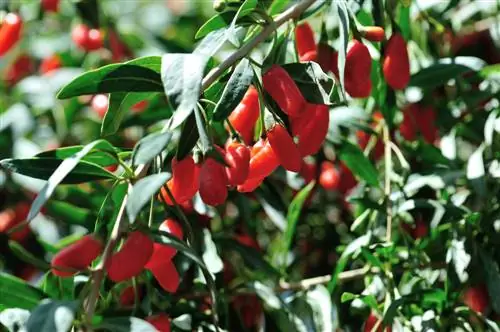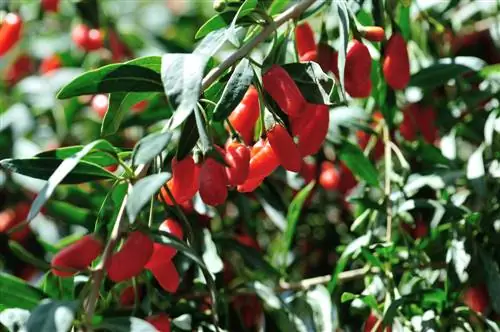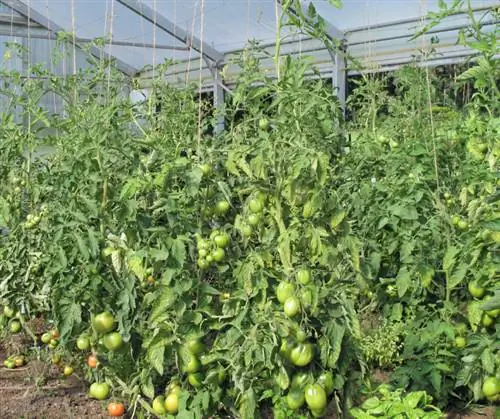- Author admin [email protected].
- Public 2023-12-16 16:46.
- Last modified 2025-01-23 11:21.
Due to its undemanding nature, the goji berry, also known as buckthorn, can be found in many places in Central Europe as a roadside green. The varieties bred specifically for high harvest yields are basically similarly undemanding, but develop particularly splendidly under optimal conditions.

Which location is suitable for goji berries?
The ideal location for a goji berry offers plenty of light and warmth, a permeable, well-ventilated soil without waterlogging and a humus-rich substrate. A square meter of space and a distance of around two meters between the plants is recommended for optimal growth.
Only young plants are protected over the winter
Young goji berry plants propagated from seeds or cuttings may not be as hardy in the first year as older specimens of this plant species. They are therefore either overwintered in a bright and unheated winter quarters or protected from the winter cold outdoors with a layer of mulch or leaves.
Reap a rich harvest from the right location
The ideal location for the goji berry in the garden offers the following location factors:
- lots of light
- lots of warmth
- drained, well-ventilated soil
- no waterlogging
- a humus-rich substrate (if necessary enriched with seasoned compost as long-term fertilizer)
Under these conditions, the goji berry basically needs little care and usually produces numerous flowers and fruits from the second or third year onwards.
Make sure there is sufficient distance when planting
Since goji berries grow quickly and vigorously, you should allow for around one square meter of space in the berry garden per plant. A distance of around two meters should be maintained between two bushes when planting. In order to get the relatively overhanging branches of the plants under control, they can also be tied to a trellis similar to blackberry tendrils (€17.00 on Amazon).
Tip
The goji berry, like the sea buckthorn, is known to thrive even on slightly saline soils near the coast.






